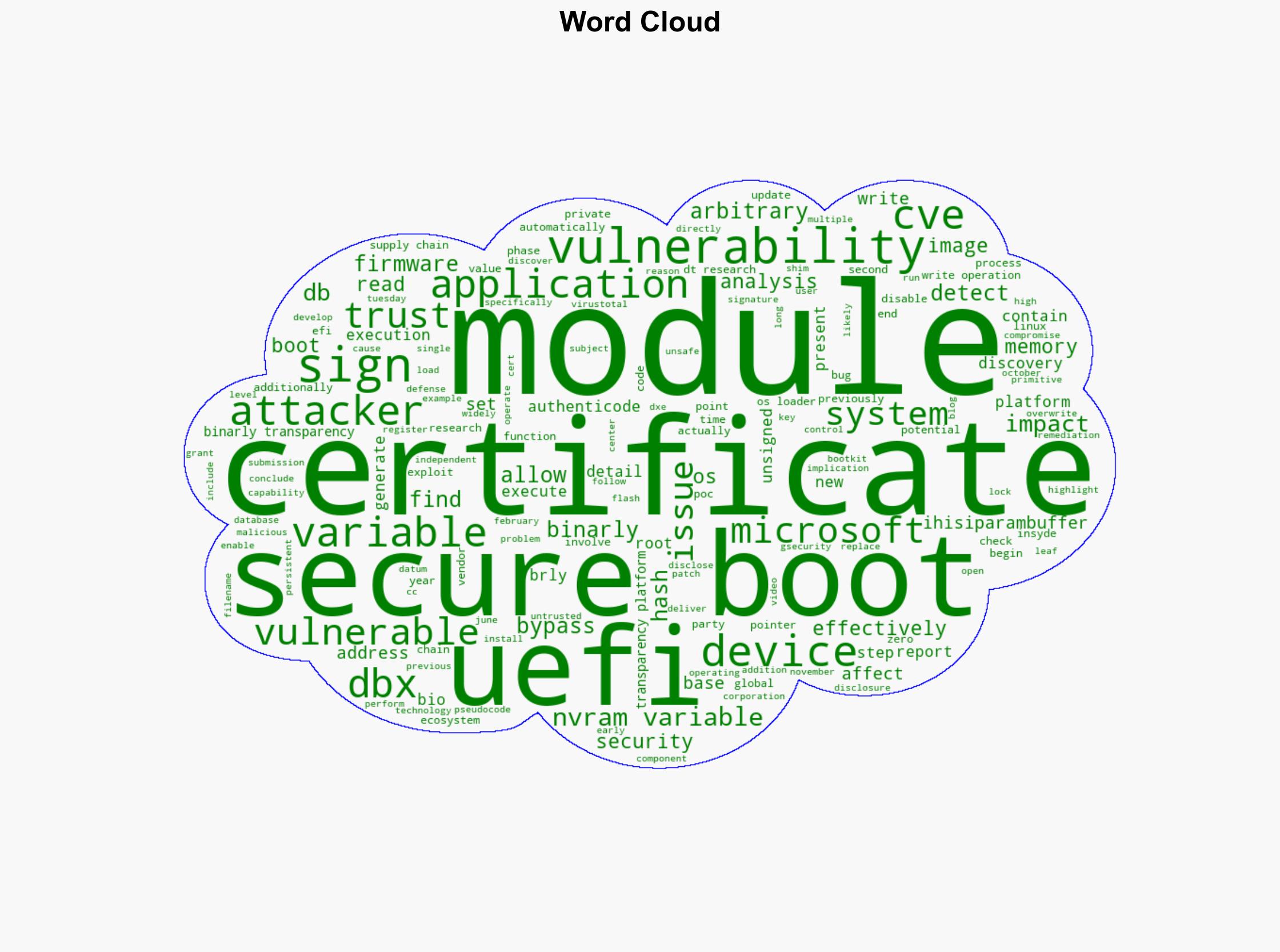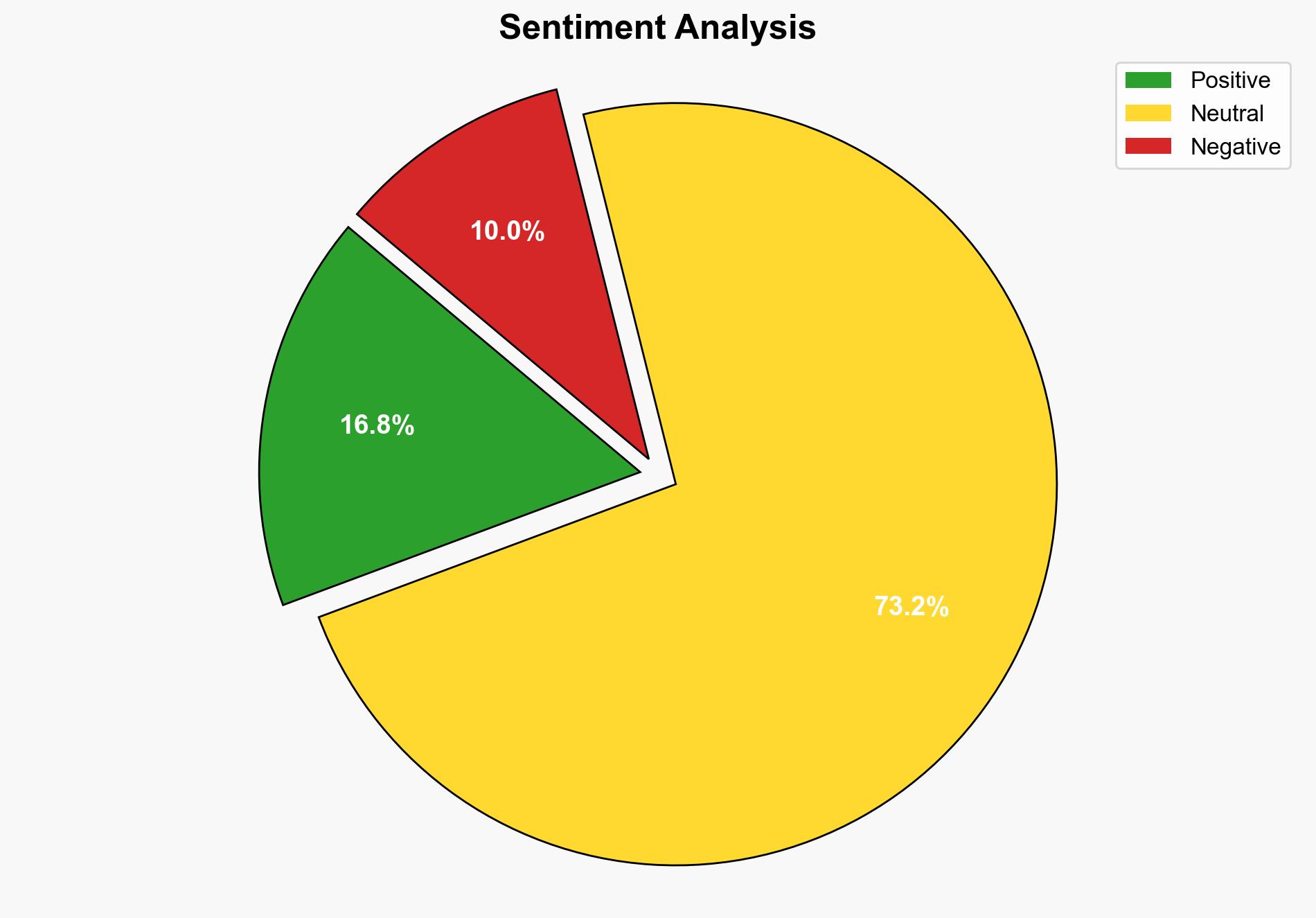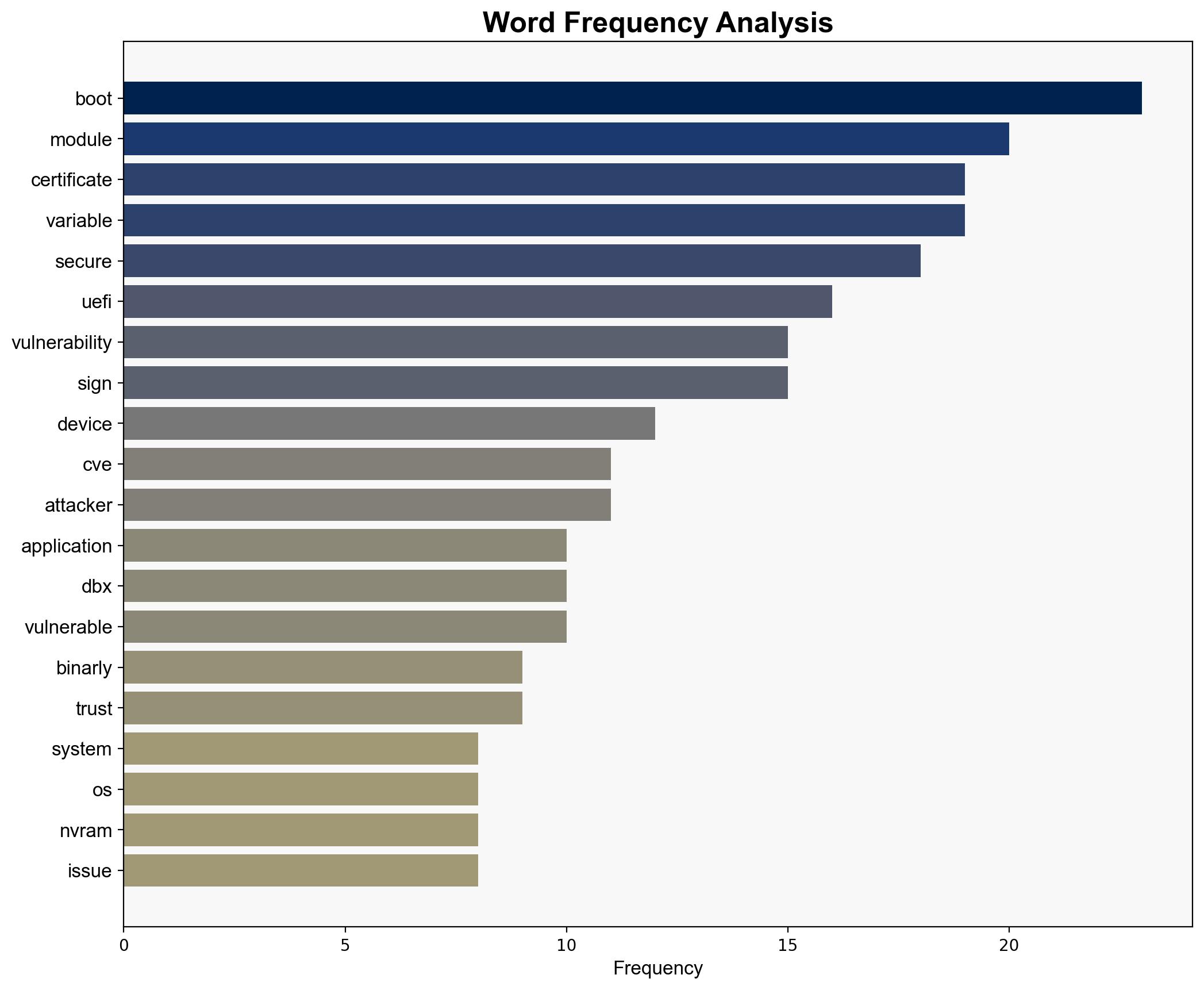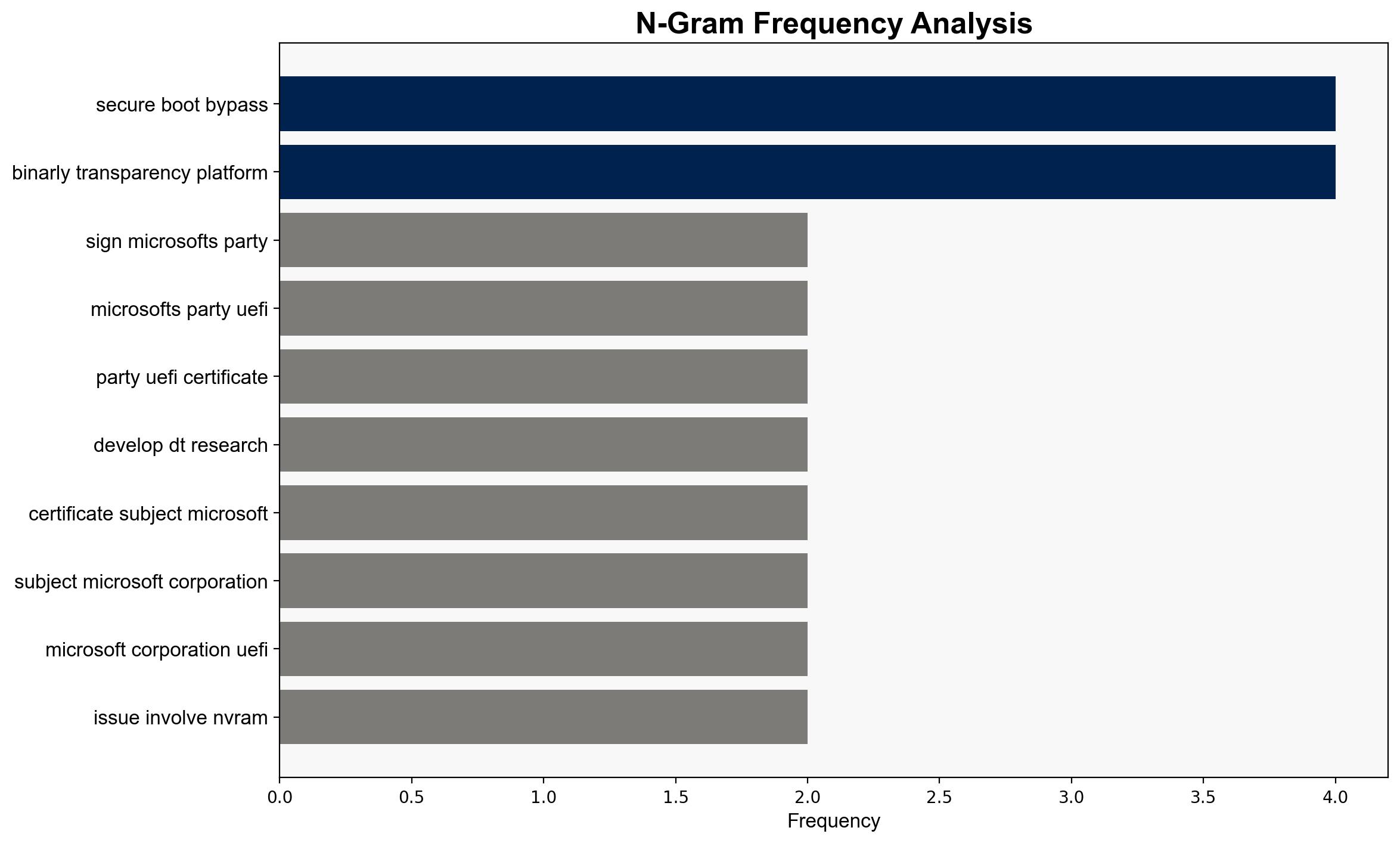Another Crack in the Chain of Trust Uncovering Yet Another Secure Boot Bypass – Binarly.io
Published on: 2025-06-10
Intelligence Report: Another Crack in the Chain of Trust Uncovering Yet Another Secure Boot Bypass – Binarly.io
1. BLUF (Bottom Line Up Front)
The discovery of a new Secure Boot bypass vulnerability, identified by Binarly, poses a significant threat to the integrity of systems relying on UEFI Secure Boot. This vulnerability allows attackers to execute unsigned code during the boot process, effectively compromising the system’s chain of trust. Immediate mitigation measures, including updating the Secure Boot DBX with new hashes, are recommended to prevent exploitation.
2. Detailed Analysis
The following structured analytic techniques have been applied to ensure methodological consistency:
Adversarial Threat Simulation
The vulnerability allows adversaries to exploit memory corruption in UEFI modules, potentially leading to the installation of bootkits that undermine OS-level defenses. Simulations suggest that attackers could gain persistent access to systems, bypassing traditional security measures.
Indicators Development
Key indicators include the presence of unsigned code execution during the boot process and anomalous behavior in systems with affected UEFI modules. Monitoring for these indicators can aid in early detection and response.
Bayesian Scenario Modeling
Probabilistic models indicate a high likelihood of exploitation in environments where UEFI Secure Boot is not updated. The potential pathways for attack include leveraging compromised certificates to execute malicious code.
3. Implications and Strategic Risks
The vulnerability could lead to widespread system compromises, affecting both government and private sector entities. The cascading effects include potential data breaches, loss of system integrity, and undermined public trust in digital infrastructure. Cross-domain risks include impacts on national security and economic stability.
4. Recommendations and Outlook
- Update Secure Boot DBX with the latest hashes provided by Microsoft to mitigate the vulnerability.
- Conduct regular security audits and vulnerability assessments on UEFI modules.
- Implement scenario-based planning to prepare for potential exploitation, considering best case (rapid patch deployment), worst case (widespread exploitation), and most likely (targeted attacks on high-value systems).
5. Key Individuals and Entities
Microsoft Corporation, DT Research, Binarly Research Team
6. Thematic Tags
national security threats, cybersecurity, UEFI vulnerabilities, Secure Boot, system integrity





